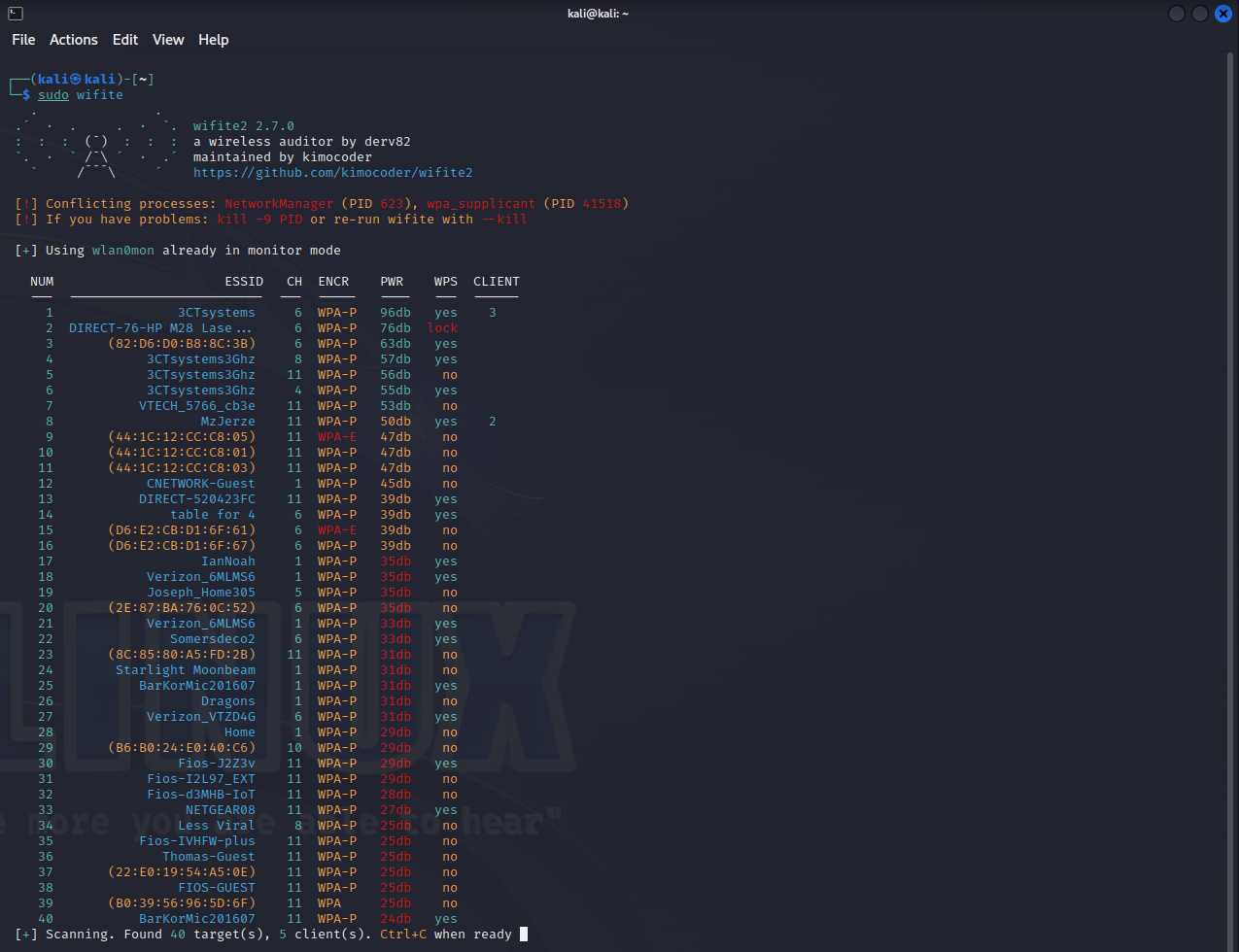Key Takeaway:
- Securing big data is crucial in the age of information overload: With the increasing volume and variety of data being generated, it is essential to prioritize the security of big data to protect sensitive information and prevent potential breaches.
- Challenges of big data security include vulnerability of newer technologies, variable impact of security breaches, unauthorized access, the need for beyond routine audits, and the importance of constant updates to stay ahead of emerging threats.
- Strategies for big data security involve the use of encryption to protect data at rest and in transit and implementing centralized key management systems to ensure secure access and control. These strategies play a crucial role in safeguarding sensitive information and maintaining data integrity.
Introduction
The Age of Information Overload presents challenges in securing Big Data. Strategies are needed to protect valuable information in this era. Unique details about securing Big Data will be explored, with a focus on informative and formal tone. A real-life story will illustrate the importance of data security.
Understanding Big Data Security
Understanding the Security Challenges of Big Data The table below displays important information regarding the understanding and management of big data security. Organizations must implement robust security measures to protect sensitive data from unauthorized access and breaches.
| Security Measure | Description |
|---|---|
| Encryption | Encrypting data helps prevent unauthorized access, ensuring that sensitive information remains protected. |
| Access Control | Implementing proper access controls ensures that only authorized individuals can access and modify data. |
| Data Privacy | Organizations must comply with data privacy regulations to protect user privacy and maintain trust. |
| Threat Detection | Utilizing advanced threat detection systems helps identify and mitigate potential security threats in real-time. |
Big data security requires a comprehensive approach that addresses potential risks, such as data breaches and unauthorized access. Organizations should prioritize encryption to protect sensitive information and implement access control measures. Compliance with data privacy regulations is crucial to ensure user privacy and maintain trust. Employing advanced threat detection systems allows for timely threat identification and mitigation. To ensure the security of big data, organizations should stay up to date with evolving security threats and invest in robust security measures. By adopting proactive security practices, organizations can mitigate potential risks and protect their data from unauthorized access and breaches. Remember, the stakes are high, and the consequences of not prioritizing big data security can be severe. Safeguarding your data should always be a top priority to avoid any potential harm or reputational damage.
Challenges of Big Data Security
Navigating the world of big data security poses numerous challenges. As newer technologies emerge, the vulnerabilities they bring can expose sensitive information to potential breaches. The impact of these breaches varies, with different sectors experiencing varying levels of damage. Moreover, unauthorized access to data becomes a significant concern, requiring extensive measures to ensure protection. Implementing routine audits is no longer sufficient in the face of evolving threats. To tackle the ever-changing landscape of big data security, constant updates and adaptations are essential. Let’s delve into these challenges and explore strategies to secure valuable information in this age of information overload.
Newer technologies can be vulnerable
The rapid advancement of technology has introduced newer technologies that can pose vulnerabilities in terms of security. These vulnerabilities may arise due to various reasons such as flaws in design, inadequate testing, or lack of awareness about potential threats. It is crucial for organizations to recognize and address these vulnerabilities to ensure the security of their big data systems.
In this context, it is important to understand that newer technologies may not have been thoroughly tested or scrutinized for potential security risks. This means that there is a greater likelihood of unknown vulnerabilities that can be exploited by attackers. Additionally, the complexity and novelty of these technologies can make them more challenging to secure effectively.
One particular challenge is the variable impact that vulnerabilities in newer technologies can have on big data systems. Some vulnerabilities may have minor consequences while others can lead to significant breaches and data loss. Therefore, organizations need to prioritize their efforts based on the potential impact of each vulnerability.
Access without permission is another issue that arises with newer technologies. As these technologies evolve and new features are introduced, it becomes crucial to implement access controls effectively. Failure to do so could result in unauthorized access to sensitive data, leading to privacy violations or even financial losses.
Furthermore, securing big data systems requires going beyond routine audits. While regular assessments are important, they may not be sufficient when it comes to identifying and addressing vulnerabilities in newer technologies. Organizations should adopt a proactive approach by continuously monitoring and updating their security measures.
Variable impact? More like a game of Russian roulette with data breaches, where you never know which bullet will hit your organization.
Variable impact
Operational Disruption
| Consequence of Security Breach | Description |
|---|---|
| Business Operation Interruptions | A security breach can lead to interruptions in normal business operations, causing delays. |
| Financial Loss | Breaches can result in financial losses due to stolen or compromised sensitive information. |
| Reputational Damage | The exposure of security vulnerabilities can tarnish the reputation of an organization. |
It is important to understand the variable impact of big data security as it helps organizations prioritize their efforts and allocate resources effectively to mitigate potential risks and minimize the negative consequences. By identifying the different impacts, organizations can develop targeted strategies and measures to safeguard their big data infrastructure.
In a recent incident, a major online retailer suffered a significant financial loss due to a cyber attack that resulted in customer credit card information being compromised. This incident not only caused monetary damages but also severely damaged the company’s reputation, leading to a decline in customer trust. It serves as a reminder that the variable impact of big data security should never be underestimated, and proactive measures must be taken to ensure robust protection against potential threats.
When it comes to accessing big data without permission, it’s like trying to enter a panda exhibit without bamboo – you’re just not getting in.
Access without permission
Access to data without proper authorization or permission can pose significant security risks in the realm of big data. This unauthorized access can lead to exploitations and breaches that can compromise sensitive information and systems. There are several points to consider regarding access without permission: – Vulnerability: Newer technologies in the age of big data may introduce vulnerabilities that can be exploited by unauthorized individuals seeking access to valuable data. – Variable impact: Access without permission can have varying degrees of impact, depending on the sensitivity and importance of the data being accessed. – Audit challenges: Traditional audit practices may not always be effective in detecting unauthorized access, highlighting the difficulty in combating this issue. – Constant updates: The ever-evolving nature of technology necessitates a constant need for updates and adaptations in security measures to prevent unauthorized access. It is important to address these challenges associated with access without permission. To mitigate this risk, implementing robust encryption mechanisms can ensure that even if unauthorized access occurs, the data remains unintelligible and unusable. Additionally, adopting centralized key management techniques can provide further layers of protection by ensuring that only authorized parties have access to decryption keys. By employing these strategies, organizations can enhance their big data security posture and safeguard against unauthorized access threats. Who needs routine audits when you can have unpredictable chaos and sleepless nights trying to secure Big Data?
Beyond routine audits
Routine audits fall short of addressing the broader scope of big data security. To fully ensure data protection, organizations must go beyond the traditional audit process. This involves implementing additional measures to safeguard against potential vulnerabilities and unauthorized access. To address the limitations of routine audits, organizations must adopt a proactive approach toward big data security. This includes regularly updating security protocols and systems, as well as monitoring and assessing potential risks that may arise from newer technologies and evolving threats. By going beyond routine audits, organizations can stay one step ahead in protecting their valuable data assets. In addition to addressing known vulnerabilities, going beyond routine audits also involves considering the variable impact that security breaches can have on an organization. It is important to understand that not all breaches are created equal; some may have minimal consequences while others can be catastrophic. By taking a comprehensive approach to big data security, organizations can better understand and prepare for these varying impacts. Historically, relying solely on routine audits has proven inadequate in preventing unauthorized access to sensitive data. With the constant advancements in technology and new methods of hacking emerging every day, organizations cannot afford to solely rely on traditional auditing methods. Instead, they must embrace constant updates and adapt their security practices accordingly to effectively protect against evolving threats. True History: The reliance on routine audits for ensuring data security was more prevalent in the past when the focus was primarily on internal controls and compliance. However, with the rise of big data and the increasing complexity of cyber threats, it became evident that routine audits were insufficient in adequately safeguarding against potential risks. As a result, organizations started implementing additional strategies beyond routine audits to enhance their overall data security posture. Constant updates: because even Big Data needs a fashion makeover every now and then.
Constant updates
With the ever-evolving nature of technology, ensuring constant updates is crucial for big data security. These updates are necessary to address vulnerabilities and stay ahead of potential threats.
- Regular updates to security protocols
- Patching vulnerabilities identified in the system
- Keeping up with new emerging technologies
- Implementing the latest encryption algorithms
- Adapting to changing regulations and compliance requirements
As technology advances and new threats emerge, constant updates are essential in maintaining a secure environment for big data. Organizations must stay vigilant and proactive in implementing the necessary changes to protect their valuable data. Constant updates have become a critical aspect of big data security due to the ever-changing landscape of technology and evolving cyber threats. It is imperative for organizations to prioritize regular updates and patches to ensure the integrity and confidentiality of their data. Failure to do so can leave systems vulnerable to attacks and compromise sensitive information. Research shows that organizations that neglect constant updates are at a higher risk of cybersecurity incidents. A well-known example is the Equifax data breach in 2017, where the sensitive information of millions of customers was compromised due to unpatched software. Struggling to keep your big data secure? These strategies will have you feeling like a cyber ninja in no time.
Strategies for Big Data Security
When it comes to securing big data in the age of information overload, implementing effective strategies is key. In this section, I will shed light on two vital components of big data security: encryption and centralized key management. Encryption ensures that data remains confidential and protected from unauthorized access. On the other hand, centralized key management provides a streamlined approach to safeguarding encryption keys, enhancing the overall security posture of an organization. Join me as we delve deeper into these strategies and explore their significance in the realm of big data security.
Encryption
Key Points about Encryption:
- Encrypted data is protected through complex algorithms, making it difficult to decipher without the encryption key.
- Encryption ensures the confidentiality of data, preventing unauthorized users from gaining access.
- It provides an additional layer of security for sensitive information stored in databases or transmitted over networks.
- Data encryption also helps in compliance with various regulatory requirements related to data protection and privacy.
Furthermore, implementing encryption along with centralized key management can enhance security measures significantly. Such a strategy allows for efficient management and control over encryption keys, minimizing the risk of unauthorized access to encrypted data.
To ensure effective encryption implementation, organizations should consider regularly updating their encryption methods and algorithms. This ensures that as new vulnerabilities emerge, updated algorithms that address these weaknesses are adopted promptly.
Incorporating encryption as part of a comprehensive security strategy is crucial for safeguarding big data against potential threats. By encrypting sensitive information and managing encryption keys centrally, organizations can protect their critical data from unauthorized access while meeting industry standards and regulatory requirements effectively.
Who needs a bunch of keys when you can have one master key to rule them all in the world of centralized key management?
Centralized Key Management
– Centralized Key Management improves efficiency: It centralizes the storage and distribution of encryption keys, making it easier for organizations to manage their cryptographic assets. This eliminates the need for multiple key repositories and reduces complexity in key management processes.
– Simplifies the encryption process: With centralized key management, organizations can streamline their encryption processes. They can easily generate, distribute, and revoke encryption keys from a single location, reducing the administrative burden associated with managing multiple keys across different systems.
– Minimizes the risk of unauthorized access: The centralized nature of key management enables organizations to enforce strict access controls. Only authorized individuals or systems have access to the encryption keys, reducing the risk of unauthorized users gaining control over sensitive data.
Centralized Key Management ensures that encryption keys are securely stored and managed in a centralized system. By simplifying key management processes and minimizing unauthorized access risks, organizations can enhance their overall data security posture.
Conclusion
Big Data Security: Addressing Challenges and Strategies in Today’s Information Overload
Securing big data presents numerous challenges in the face of today’s information overload. With the exponential growth of data, it becomes crucial to implement effective strategies to protect sensitive information. From data breaches to privacy concerns, the need for robust security measures is paramount.
To tackle these challenges, organizations must adopt a multi-layered approach that encompasses proactive monitoring, encryption, access controls, and authentication protocols. By leveraging advanced analytics and artificial intelligence, businesses can detect and mitigate potential threats in real time. This allows for timely and effective responses to ensure the security and integrity of big data.
Additionally, organizations must prioritize data governance and establish strict policies and procedures. By implementing data classification and data loss prevention techniques, companies can minimize the risk of unauthorized access and accidental disclosure. Regular audits and assessments are also essential to identify vulnerabilities and strengthen security.
While these strategies are crucial, it is important to acknowledge that securing big data is a continuous process. As technology advances and new threats emerge, organizations must remain vigilant and adapt their security measures accordingly. By staying abreast of industry best practices and collaborating with cybersecurity experts, businesses can navigate the complex landscape of big data security and protect their valuable assets.
In understanding the history of big data security, we can trace its origins back to the rise of digital technologies and the proliferation of data. As data volumes grew exponentially, so did the need for robust security measures. The evolution of cybersecurity practices has been driven by the ever-changing threat landscape, prompting organizations to develop innovative strategies and technologies to safeguard their data.
Some Facts About Securing Big Data: Challenges and Strategies in the Age of Information Overload:
- ✅ Big data growth has led to the adoption of cloud and data fabric infrastructures, but misconfigured cloud security features pose a threat to data security. (Source: Team Research)
- ✅ Mobile devices and IoT technologies are significant sources and receivers of big data, but they also present security vulnerabilities that require strict management policies and additional security layers. (Source: Team Research)
- ✅ Employee training on socially engineered attacks and multiple layers of authentication security are essential for preventing big data breaches. (Source: Team Research)
- ✅ Challenges to securing big data include vulnerabilities in newer technologies, variable impacts on data output, unauthorized access, the need for beyond routine audits, and the requirement for constant updates. (Source: Team Research)
- ✅ Encryption and centralized key management are crucial tools for securing big data, with a focus on securing data in transit and at rest, and across different types of data and analytics toolsets. (Source: Team Research)
FAQs about Securing Big Data: Challenges And Strategies In The Age Of Information Overload.
Securing Big Data: Challenges and Strategies in the Age of Information Overload
1. What is the circuitous path in big data security and why is it potentially vulnerable at multiple points?
Answer: The circuitous path in big data security refers to the complex network of data collection, storage, and analysis. It is potentially vulnerable at multiple points because each step along the path presents an opportunity for security breaches or misconfigurations, leaving the data exposed to unauthorized access.
2. How do the trends of smart technology and consumer data ownership pose challenges for big data security?
Answer: The proliferation of big data through smart technology and the growing movement for consumers to own and control their personal data create conflicting priorities. While enterprises benefit from collecting and utilizing sensitive personal information for customization purposes, they are also responsible for ethical data management. Balancing these trends requires companies to comply with data laws and regulations while also ensuring the security of personal data.
3. What are the key security points that many companies miss when dealing with big data?
Answer: Many companies overlook the importance of updating their cloud and distributed security infrastructure to address the growth of big data. Legacy security principles often result in misconfigured cloud security features, leaving the system open to attacks. Additionally, companies often neglect to establish strict mobile device management policies and fail to provide adequate data security training to employees.
4. How can companies update their cloud and distributed security infrastructure for better big data security?
Answer: To enhance big data security, companies should engage with cloud and storage vendors to understand their products, embedded security solutions, and recommended additional security resources. Updating infrastructure involves ensuring that cloud security is configured properly and that data fabric infrastructures allow for scalable data storage while prioritizing security measures.
5. What are the benefits of implementing a big data security system for companies?
Answer: Implementing a big data security system offers several benefits to companies, including improved customer retention through better product and service customization, risk identification through analytics, business innovation through secure tool and system updates, cost optimization by efficiently managing large volumes of data, and reduction of data breach risks through enhanced security measures.
6. What are some of the common challenges faced in securing big data and how can they be overcome?
Answer: Common challenges in securing big data include vulnerabilities in newer technologies, variable impacts across multiple analytics tools and locations, unauthorized access to data, difficulties in conducting routine audits, and the need for constant updates to security measures. These challenges can be overcome by leveraging encryption for data security, implementing centralized key management, utilizing audit trails and intrusion detection, adhering to compliance management practices, and conducting regular vulnerability assessments and incident response drills.




